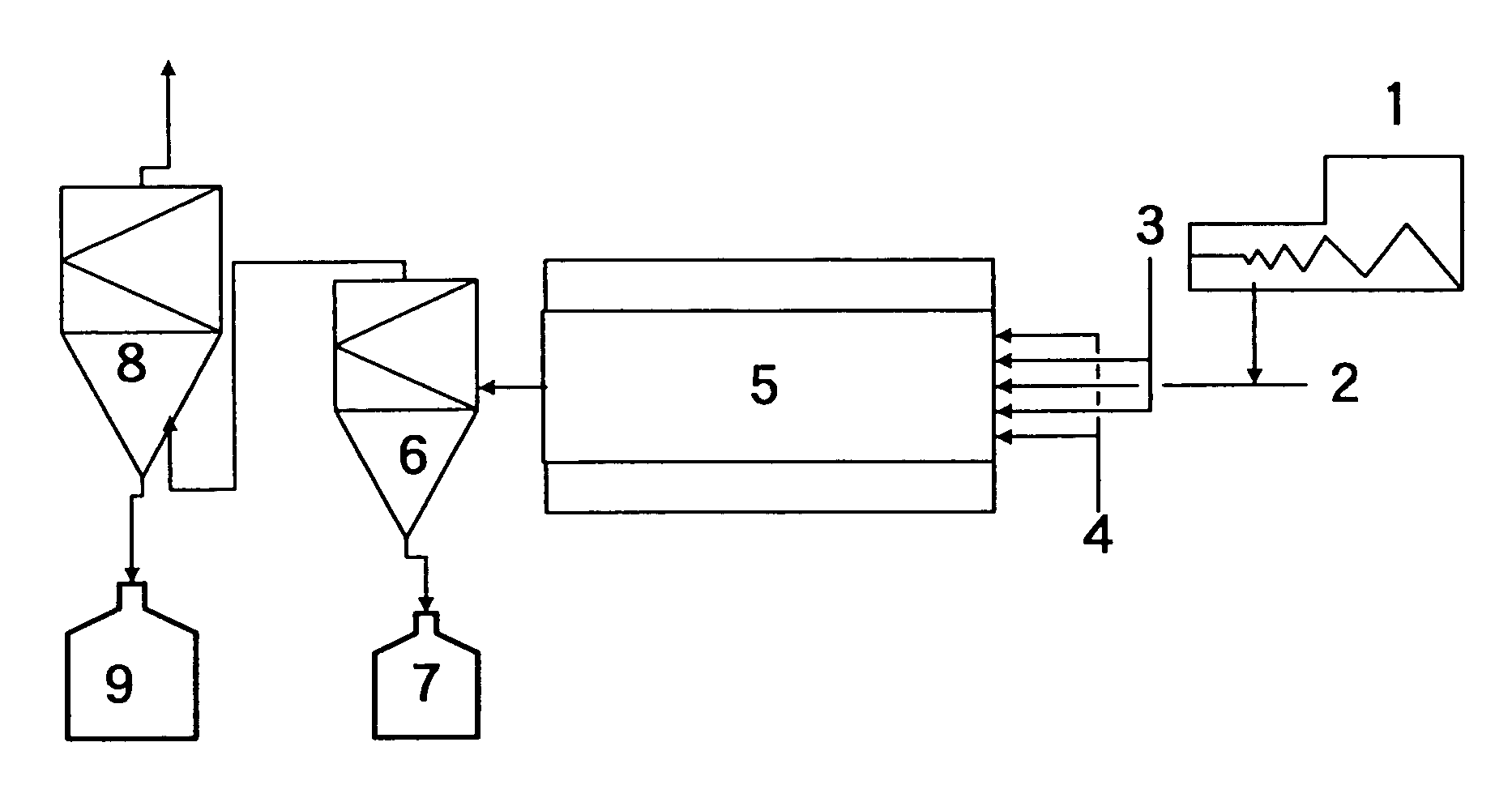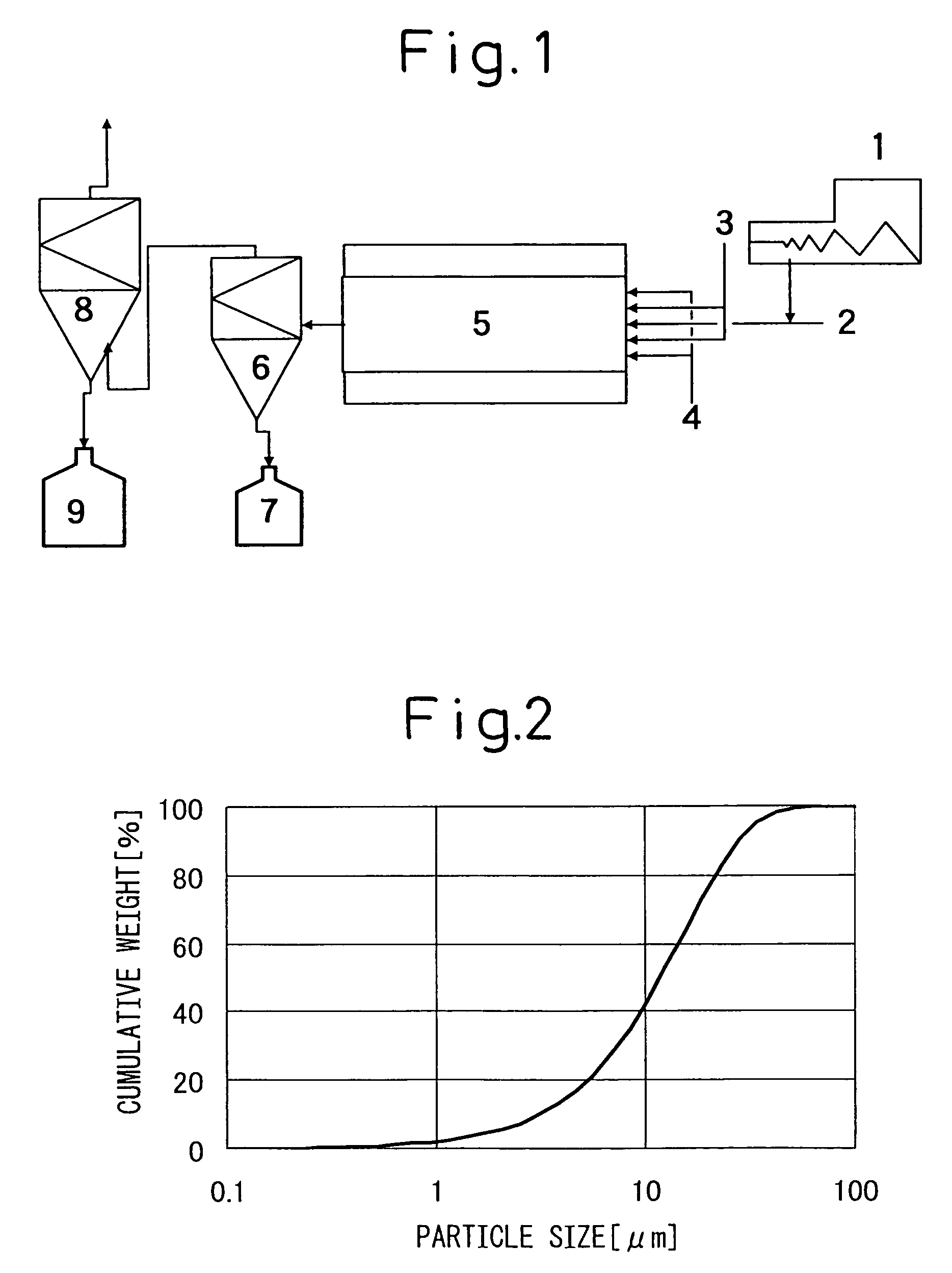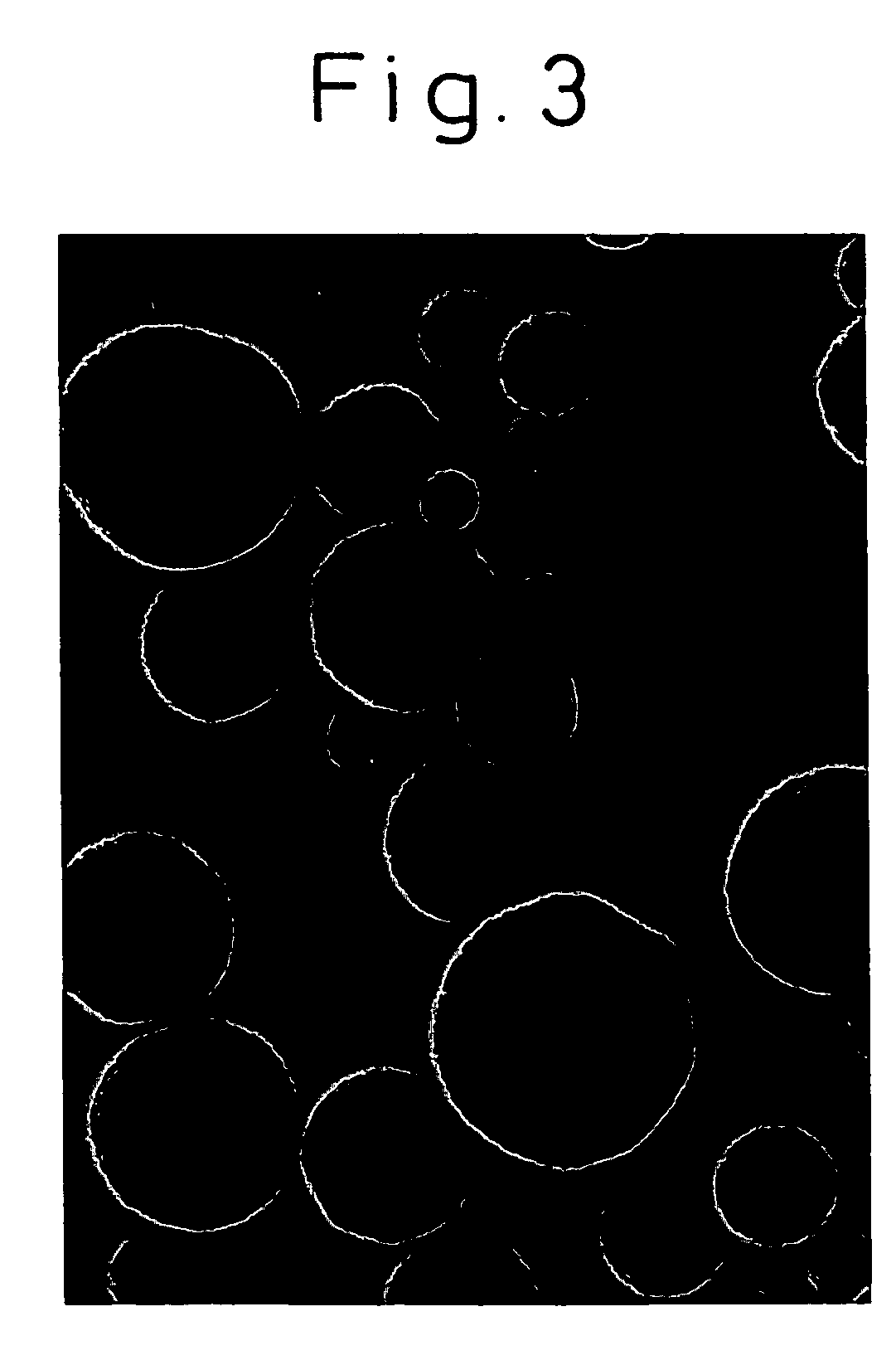Surface modification method for inorganic oxide powder, powder produced by the method and use of the powder
a technology of inorganic oxide powder and surface treatment, which is applied in the directions of natural mineral layered products, transportation and packaging, and cellulosic plastic layered products, etc., can solve the problems of low productivity and high production cost, and the difficulty of carrying out powder production and surface treatment in a single process
- Summary
- Abstract
- Description
- Claims
- Application Information
AI Technical Summary
Benefits of technology
Problems solved by technology
Method used
Image
Examples
example 1
[0084]Gaseous titanium tetrachloride (concentration: 100%) was preliminarily heated to 1,000° C. Separately, a gas mixture of oxygen (96 vol. %) and steam (4 vol. %) was preliminarily heated to 1,000° C. The titanium tetrachloride gas and the gas mixture were brought into a reaction tube through a coaxial parallel-flow nozzle at flow rates of 45 m / second and 50 m / second, respectively. The titanium tetrachloride gas was fed through the inner tube. The flow rates of the titanium tetrachloride gas and the gas mixture in the reaction tube were found to be 8 m / second (calculated value) at a reaction temperature of 1,630° C. Cooling air was brought into the reaction tube such that the high-temperature residence time of the resultant reaction mixture was 0.1 seconds or less in the reaction tube. Thereafter, the thus-produced titanium dioxide powder was collected by use of a polytetrafluoroethylene-made bag filter.
[0085]The thus-produced titanium dioxide powder was found to have a BET-based...
example 2
[0091]Gaseous aluminum chloride which had been diluted with nitrogen (concentration of aluminum chloride: 60%) was heated to 1,000° C. Separately, a gas mixture of oxygen (40 vol. %) and steam (60 vol. %) was heated to 1,000° C. The aluminum chloride gas and the gas mixture were brought into a reaction tube through a coaxial parallel-flow nozzle at flow rates of 40 m / second and 30 m / second, respectively. The aluminum chloride gas was fed through the inner tube. After completion of reaction, cooling air was brought into the reaction tube such that the high-temperature residence time of the resultant reaction mixture was 0.1 seconds or less in the reaction tube. Thereafter, the thus-produced alumina powder was collected by use of a polytetrafluoroethylene-made bag filter.
[0092]The thus-produced aluminum oxide powder was found to have a BET-based particle size of 37 nm and to predominantly contain a δ-alumina crystal phase. The aluminum oxide powder was employed as powder B (raw materi...
example 3
[0097]Gaseous aluminum chloride which had been diluted with nitrogen (concentration of aluminum chloride: 26%) was preliminarily heated to 1,000° C. Separately, a gas mixture of oxygen (35 vol. %) and steam (65 vol. %) was preliminarily heated to 1,000° C. The aluminum chloride gas and the gas mixture were brought into a reaction tube through a coaxial parallel-flow nozzle at flow rates of 61 m / second and 55 m / second, respectively. The aluminum chloride gas was fed through the inner tube. After completion of reaction, cooling air was brought into the reaction tube such that the high-temperature residence time of the resultant reaction mixture was 0.1 seconds or less in the reaction tube. Thereafter, the thus-produced alumina powder was collected by use of a polytetrafluoroethylene-made bag filter.
[0098]The thus-produced aluminum oxide powder was found to have a BET-based particle size of 15 nm and to predominantly contain a γ-alumina crystal phase. The aluminum oxide powder was empl...
PUM
| Property | Measurement | Unit |
|---|---|---|
| scattering particle size analysis | aaaaa | aaaaa |
| temperature | aaaaa | aaaaa |
| particle size | aaaaa | aaaaa |
Abstract
Description
Claims
Application Information
 Login to View More
Login to View More - R&D
- Intellectual Property
- Life Sciences
- Materials
- Tech Scout
- Unparalleled Data Quality
- Higher Quality Content
- 60% Fewer Hallucinations
Browse by: Latest US Patents, China's latest patents, Technical Efficacy Thesaurus, Application Domain, Technology Topic, Popular Technical Reports.
© 2025 PatSnap. All rights reserved.Legal|Privacy policy|Modern Slavery Act Transparency Statement|Sitemap|About US| Contact US: help@patsnap.com



